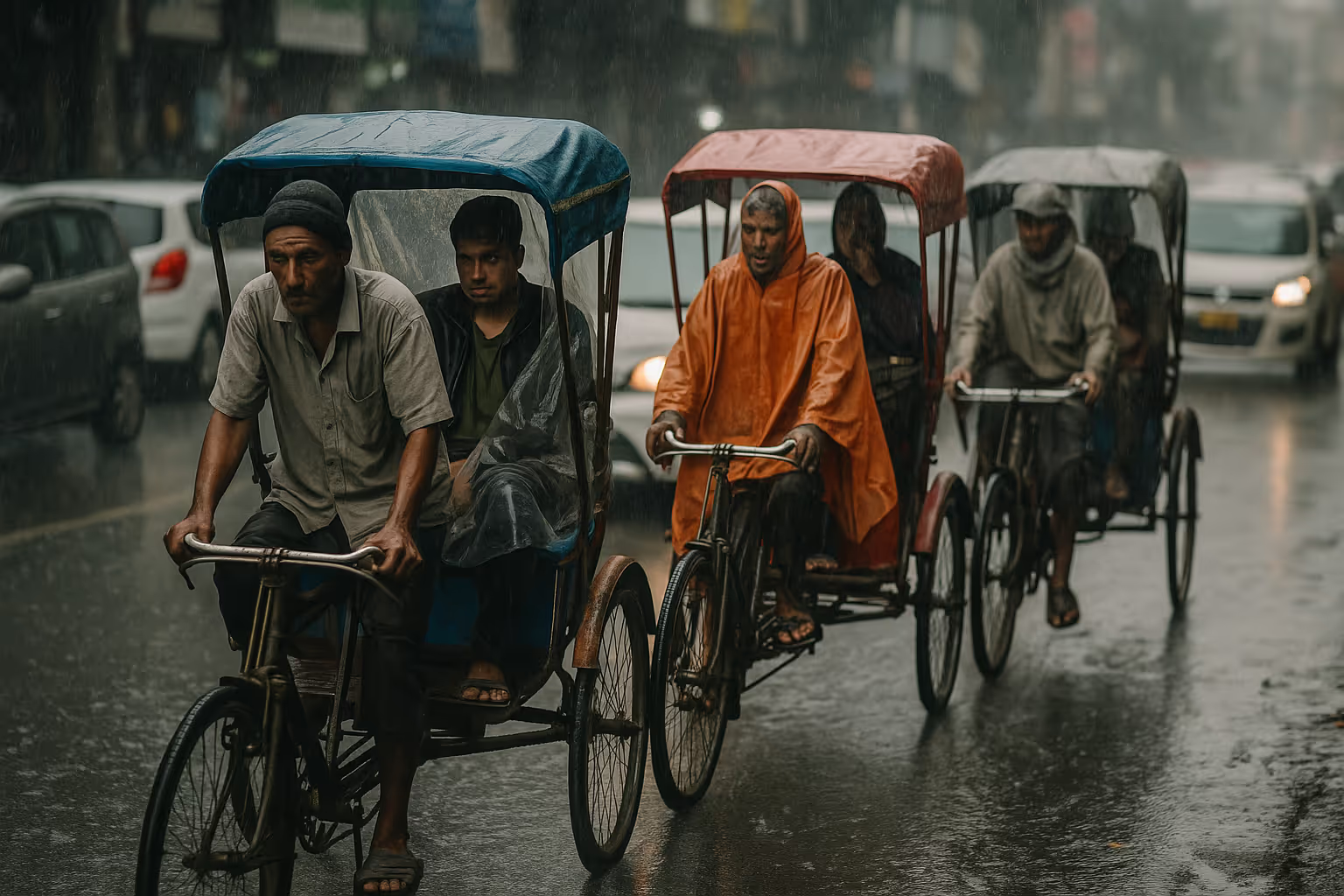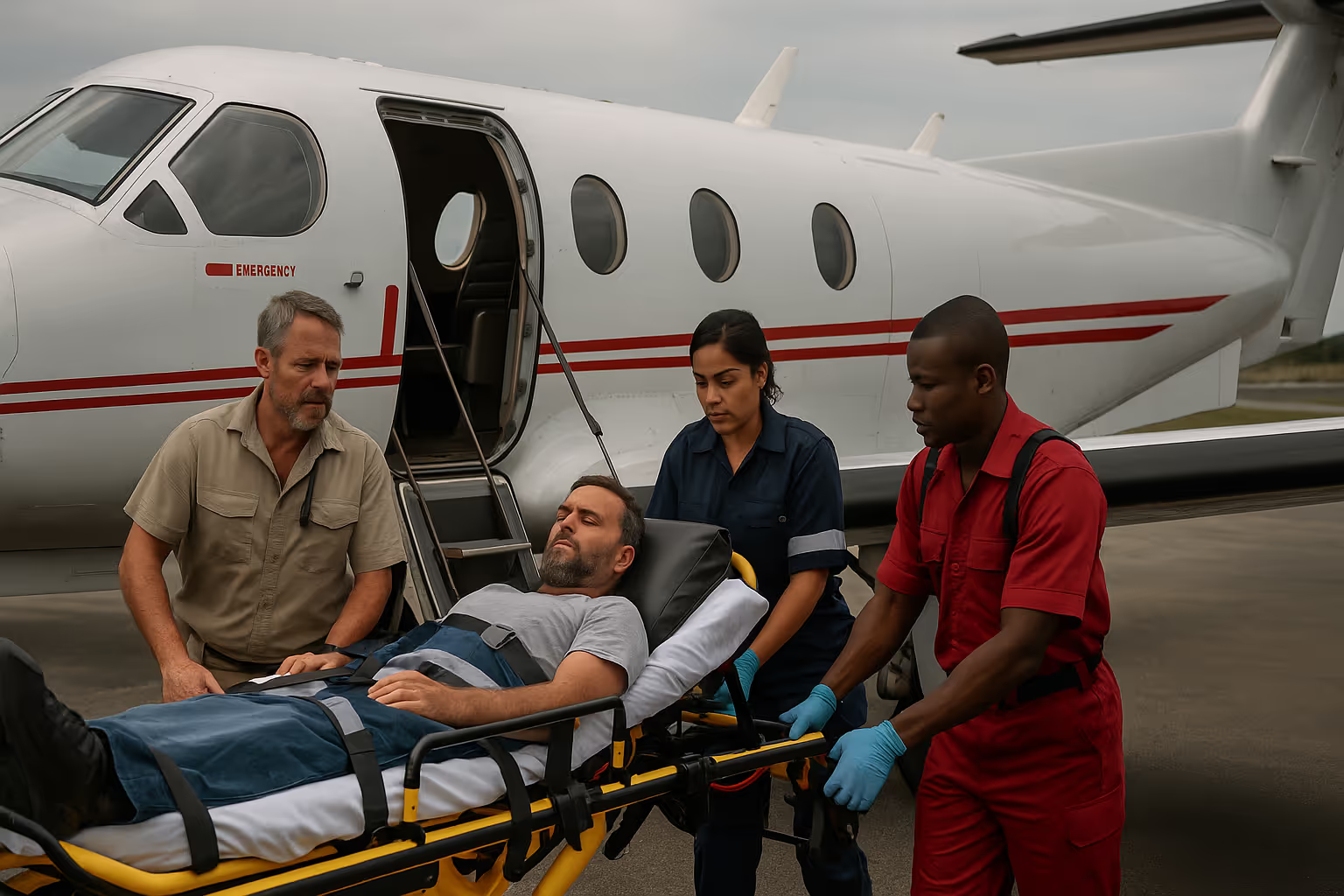Medical Evacuation and Repatriation: What’s Actually Covered?

When people think about travel insurance or work-related cover abroad, they often focus on medical bills or lost luggage. But in serious situations—especially in remote, unstable, or underdeveloped regions—the biggest risk is getting out safely and getting proper care.
That’s where medical evacuation and repatriation cover comes in.
This post breaks down what these terms mean, when they’re triggered, what’s covered (and not), and why they matter—whether you’re an individual on assignment or responsible for teams operating abroad.
What Is Medical Evacuation?
Medical evacuation (often shortened to “medevac”) is emergency transport from the site of an accident or illness to a nearby facility capable of providing appropriate treatment.
This may involve:
- Ground ambulance from a rural site to the nearest hospital
- Helicopter lift from a conflict zone to a trauma centre
- International air ambulance from a remote country to a medical hub (e.g. Nairobi, Dubai, Singapore)
It’s not about convenience—it’s about survival and proper care when local medical services aren’t equipped for serious cases.
What Is Medical Repatriation?
Repatriation is the transport of a patient back to their home country after receiving emergency care. This can be for continued treatment, rehabilitation, or recovery closer to family and support systems.
It may also include:
- Coordinated air travel with a medical escort
- Arrangements for wheelchairs, oxygen, or specialist support in transit
- Coordination with home-country hospitals
Some policies also cover repatriation of remains in the event of death abroad.
When Is Evacuation or Repatriation Triggered?
Evacuation isn’t automatic—it’s based on medical necessity. That usually means:
- The local hospital cannot treat your condition safely or effectively
- Your injury or illness is life-threatening or function-threatening
- Repatriation is required for recovery or specialist care not available locally
The decision is normally made by the insurer’s medical team in consultation with local doctors and global crisis response providers.
Why This Cover Matters
Many people assume their normal travel or health insurance includes evacuation. It often doesn’t—or comes with serious restrictions.
Here’s why this specialist cover matters:
- Evacuation can cost $50,000–$250,000 depending on distance, equipment, and aircraft
- In conflict or disaster zones, commercial flights may be unavailable or unsafe
- Many policies exclude evacuation during acts of war, civil unrest, or terrorism
We’ve seen real claims for:
- Road traffic accidents in Africa and Asia
- Typhoid or malaria caught on assignment
- Journalists and engineers injured in war zones
- NGO staff requiring evacuation from natural disasters
Without cover, the costs are crippling—and help may not come.
What Does Our Policy Cover?
Our policies include emergency evacuation and medical repatriation as standard (no extra charge), including in high-risk and conflict areas.
We work with Northcott Global Solutions (NGS), who provide:
- 24/7 multilingual crisis response
- Secure ground/air extraction
- Triage and routing to appropriate care
- Logistical support for families, embassies, and local authorities
Covered:
- Medevac by road or air (as needed)
- Repatriation to country of residence
- On-the-ground support during extraction
- Transport of mortal remains if required
Not Covered:
- Non-emergency travel or elective treatment
- Evacuation from your home country
- Conditions that were pre-existing and excluded
- Refusal to follow local medical advice
How Much Does It Cost?
Evacuation is included within:
- Individual Cover from US $29.70 per week
- Group Personal Accident from US $11.00 per person per day
- Local Worker Cover from US $11.00 per person per day
All include emergency medical and evacuation services as standard.
What If I’m Not in a Conflict Zone?
Even in low-risk areas, infrastructure failures and poor-quality healthcare can mean evacuation is the safest option.
Examples include:
- Food poisoning or infection requiring urgent care
- Internal injuries from accidents or falls
- Post-surgical complications while abroad
- Natural disasters where facilities become inaccessible
Real-World Example
A construction advisor working in rural Central America broke his leg in multiple places during a site inspection. The nearest hospital was 4 hours away and lacked surgical capacity.
His policy covered:
- Helicopter medevac to the capital
- Immediate surgery
- Repatriation with medical escort to the UK for physiotherapy
Without insurance, the evacuation alone would have cost more than $60,000.
Trusted Support
All our policies are backed by experienced crisis response professionals and built for real-world scenarios—whether you’re managing a team or working solo.
Our response partners coordinate everything from visas and overflight permissions to hospital bed bookings—so you can focus on recovery, not red tape.
External Resource
Crisis24 – Medical & Evacuation Services
Summary
- Evacuation and repatriation are life-saving, high-cost services not covered by most standard policies
- Our cover includes these as standard—even in hostile or remote locations
- Help is coordinated by 24/7 crisis response teams with global reach
- Pricing is simple, affordable, and flexible by the day or week
What Next?



